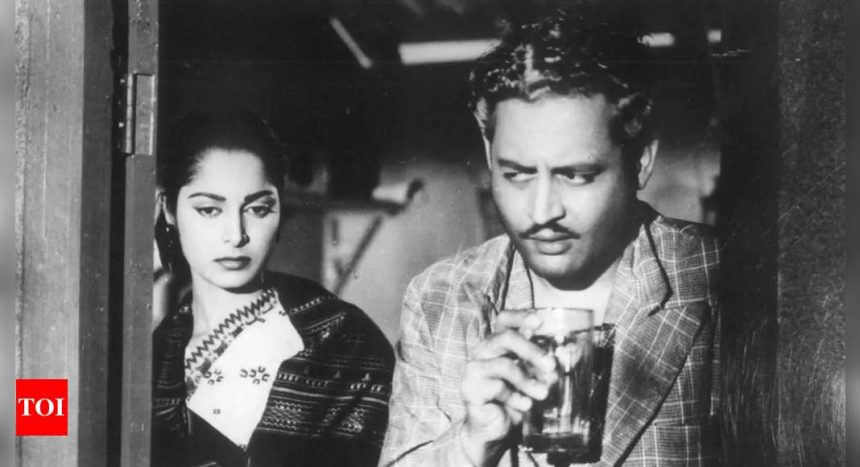With its intense narrative, brilliant cinematography, and haunting music, Kaagaz Ke Phool remains a masterpiece that resonates with audiences even 66 years after its release, proving that true art transcends time and initial reception.
On the occasion of Kaagaz Ke Phool completing 66 years, film historian Pavan Jha shared insights with ETimes about the lasting impact of Guru Dutt’s 1959 cinematic masterpiece. Despite being a box office failure upon its release, the film has become a timeless classic, cherished by audiences across generations.
Speaking about the film’s unique appeal, the historian said, “Some films targeted to the current generation are pieces of art. They become big hits during their time but they don’t have a shelf life for the future audience. When Binaca Geetmala used to air, there were many songs that people haven’t cared about for the last 20-30 years. But there are pieces of art that not only cater to the current generation but also to the future generations. Kaagaz Ke Phool is one of those films that has extended its shelf life despite it being a Box Office failure. It didn’t meet the audience’s expectations when it was released in 1959. The film has lived well in the years to come.”
The film’s heavy narrative and realistic depiction of life and the film industry made it a stark departure from the entertainment-driven cinema of that era. “I think in 1959, we were dealing more with the social. When I watched the film for the first time, I felt very heavy. It wasn’t a light-hearted movie that I expected to watch and come out of a theatre. I carried a kind of burden, but that impact remained for a long time; because of the way the film talks about his journey. It gives you the bitter truth of life. It was more realistic cinema than entertainment cinema. In fact, Guru Dutt was not known for such heavy-headed films despite giving Pyaasa to us. Kaagaz Ke Phool was a statement on the film industry and the industry did not take it positively. It was critical of the industry. So, there was no positive vibe about the film,” the historian noted.
The movie’s candid take on the film industry, particularly its critique of stardom and the neglect of behind-the-scenes creators, wasn’t well-received initially. “The film was not for the star system prevailing in that era. It was not accepted because of the way it was shown how stardom takes over and the real creator gets ignored. It showed the harsh reality of how the industry treats its artists. What matters more to people are the artists seen on screen; not the ones working behind the camera,” the historian added.
The film’s redemption came with the evolution of audience sensibilities and the rise of parallel and middle-of-the-road cinema. Its rediscovery during the Doordarshan era played a significant role in cementing its legacy. “The film’s music lived well for so many years. Doordarshan also played a role when it took the film to a whole lot of different audiences who didn’t watch the film in theatres. That’s when many people discovered the class of Kaagaz Ke Phool. Guru Dutt also became a cult during the Doordarshan era when his films such as Pyaasa, Aar Paar, and Mr. & Mrs. 55 were shown on TV. Films such as these got their redemption because of television. Before that, it was music that carried the film to the audience,” the historian explained.
Highlighting the technical brilliance of the film (V. K. Murthy’s Cinematography), the historian shared an anecdote from the iconic Waqt Ne Kiya Kya Haseen Sitam song. “I had the fortune of meeting V. K. Murthy. He told me about a shot from the Waqt Ne Kiya Kya Haseen Sitam song. The studio’s rooftop was way up. So, sun rays couldn’t reach the way Guru Dutt wanted. They consulted some foreign technicians but everyone said that it was impossible. But Murthy could pull off with a jugaad. When such things are done, cinema becomes great. Kaagaz Ke Phool is one of the most intense films from Bollywood. There was a Citizen Kane influence on it. You can relate the film’s opening shot to Citizen Kane,” he shared.
Contrary to popular belief, the historian clarified that Kaagaz Ke Phool wasn’t biographical. “I would rather say that it was a futuristic movie. It cannot be biographical because Guru Dutt had zero failures till that point. So, he couldn’t make a film on his failure. It was his first failure. The failure of Kaagaz Ke Phool, is reflected in his life. It was sort of a forthcoming film. The financial failure was not a big factor because films produced by him later, Sahib Biwi Aur Ghulam and Chaudhvin Ka Chaand were hit. His forthcoming personal failures are reflected in Kaagaz Ke Phool. So, calling it a biographical film is not justified,” he explained.
The film’s music, composed by S.D. Burman, also contributed to its enduring appeal. “Great music will always keep a film alive,” the historian remarked.












